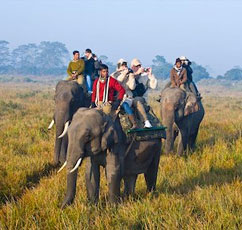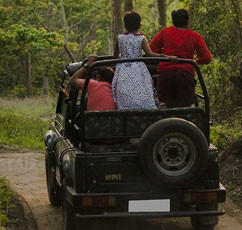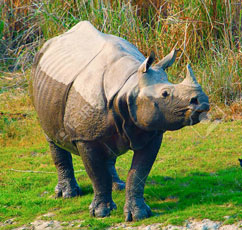Orang National Park
Orang National Park also known as Rajiv Gandhi National Park is expanded between Darrang and Sonitpur districts of Assam. This wildlife reserve is sprawl over an area of 79 square kilometres and was crowned as national park in the year of 1999. Orang National Park is quite similar to the Kaziranga National Park in terms of landscape with strategic location of marshes, streams and grasslands. It is also recognized as the most significant wildlife reserve to protect one horn rhinos on the northern bank of River Brahmaputra. Orang shelters an ample variety of flora and fauna with popular species like Royal Bengal Tiger, Asiatic Elephant, pygmy hog, hog deer and wild boar.
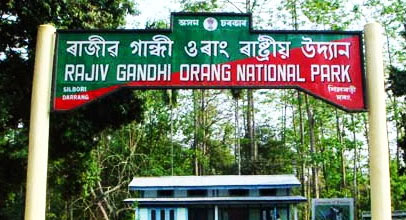
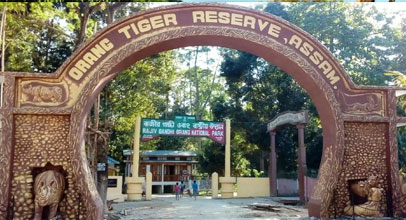
Orang National Park is bestowed with above 220 species of indigenous birds and 50 varieties of fish along with a healthy population of Gangetic Dolphins in the national park. Approximately seven species of tortoise and turtle can also be seen in Orang with snakes such as python and Cobra.
Orang Becomes Assam’s Newest Tiger Reserve
In a major development to tiger conservation in northeast India, Orang National Park has been declared a tiger reserve. It improved its ranking to 4th in state and 49th in the country. Situated on the north bank of Brahmaputra, Orang is often called as the “mini Kaziranga” due to presence of one horned rhino and similar landscape. Tiger population here is approximately 24 is equally sound.
Kaziranga National Park is also equipped with aquatic floras in the lakes and ponds and along the river shores. The invasive water hyacinth is very common, often choking the water bodies, but it is cleared during destructive floods. Another interfering species, Mimosa invisa, which is toxic to herbivores, was cleared by Kaziranga staff with help from the Wildlife Trust of India in 2005.
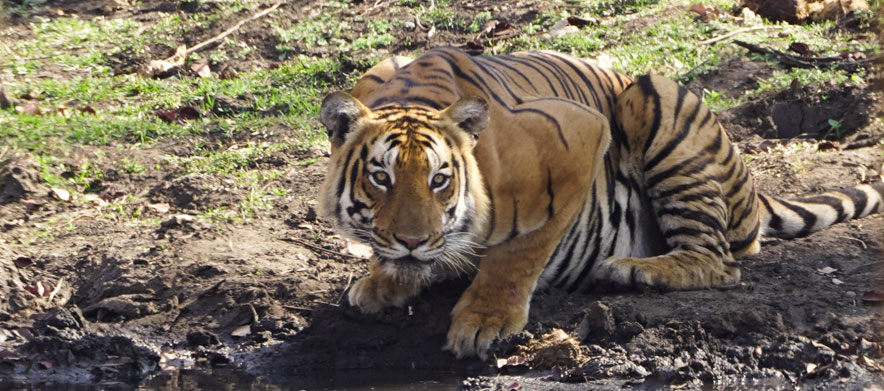
In the year 2015, the National Tiger Conservation Authority (NTCA) gave signal to declaring 493 square kilometre of Orang as a Tiger Reserve. In which approx 80 sq km is core area and rest is the buffer area of the park. From being declared as a wildlife sanctuary in the year 1985, to a national park in 1999, to this final notification, Orang has come a long way. It now enjoys equal status with the Kaziranga, Nameri and Manas tiger reserves.
| Sl. No. | Habitat Types | Area Square KMS |
| 1. | Eastern Himalayan Moist Deciduous Forest | 15.85 |
| 2. | Eastern Seasonal Swamp Forest | 3.28 |
| 3. | Eastern Wet Alluvial Grassland | 8.33 |
| 4. | Savannah Grassland | 18.17 |
| 5. | Degraded Grassland | 10.36 |
| 6. | Water body | 6.13 |
| 7. | Moist Sandy area | 2.66 |
| 8. | Dry Sandy area | 4.02 |
Flora in Orang National Park
Orang National Park is blessed with the rich vegetation of jungle, natural forests and non-aquatic plants. The forest species found here include Bombax ceiba, Dalbergia sissoo, Sterculia villosa, Trewia nudiflora, Zizyphus jujuba and Litsaea polyantha. Among the non aquatic grassland species the popular are Phragmites karka, Arundo donax, Imperata cylindrica and Saccharum spp.
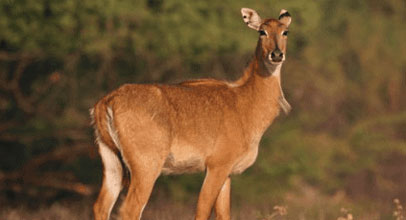
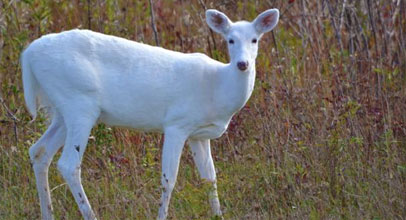
How to Reach Orang National Park
Salonibari airport located at Tezpur is nearest airport to Orang National Park which is about 80 kms away. Guwahati is the nearest airport located at a distance of 150 kms from the park. The nearest railhead is at Magaldai at distance of 70 kms. You need hire cab/taxi from all three destinations of reach Orang National Park.
Famous Things to do at Orang National Park
Wildlife safari inside the park is thrilling experience to enjoy, spot one horned rhino, local sightseeing, these are some of the must do thing while you are touring in Orang National Park.






